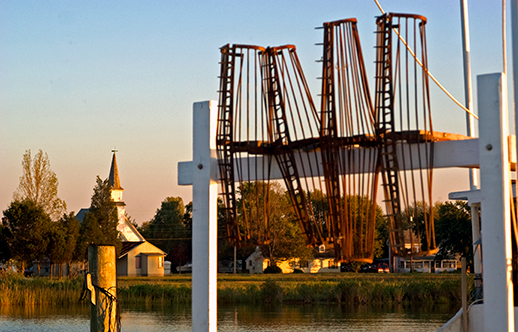|
October 2016 • Volume 15, Number 3

Photograph, Michael W. Fincham
|
Michael W. Fincham
On the day after Christmas 1966, 7,000 scientists gathered in snowbound Washington, DC for the world's largest meeting of working scientists. The most memorable speech, however, came from a medieval historian, named Lynn White Jr., who gave an unexpected analysis of the world's current environmental crisis. He claimed that the root causes of the crisis were in our heads, in the unconscious ideas that we carried there. And for most people in Western societies, those eco-damaging ideas came from Judeo-Christian religions. White's thesis connected religion with the rise of science and the decline of the environment, kicking off a 50-year debate. One result of that debate: a campaign by Carl Sagan and the science community calling on religious communities to begin tackling the environmental crisis facing the planet. more . . .
|
The rise of an American religious environmental movement began in the 1990s, but was late in arriving in the Chesapeake region. In 2004 an environmentalist and an academic from two Towson-area churches began creating an organization designed to recruit religious congregations into environmentalism, re-energize their faith practices, and encourage a "caring for Creation" ethic focused on Chesapeake Bay. Now a number of regional groups are running tree planting and stormwater control projects in the watershed. more . . .
|
Jodi Rose got into religious environmentalism by choosing the road less taken. As the new leader for a small group called the Interfaith Partners for the Chesapeake, she found herself helping churches solve their stormwater runoff problems. The job takes more than prayer,it takes hard work: outreach and education with the faith community, collaboration with long-established environmental organizations like the Alliance for Chesapeake Bay,and fund-raising luck. Optimism, she found, helps. And so does prayer. more . . .
|
The Watershed Stewards Academy program trains master watershed stewards, who can then educate others and serve as trusted sources of information for communities, including church congregations, trying to manage runoff. more . .
|
Chesapeake Quarterly magazine readers: we need your help. Let us know how we can better serve you. Please take a five-minute survey. To request a paper copy, email us.
|
|